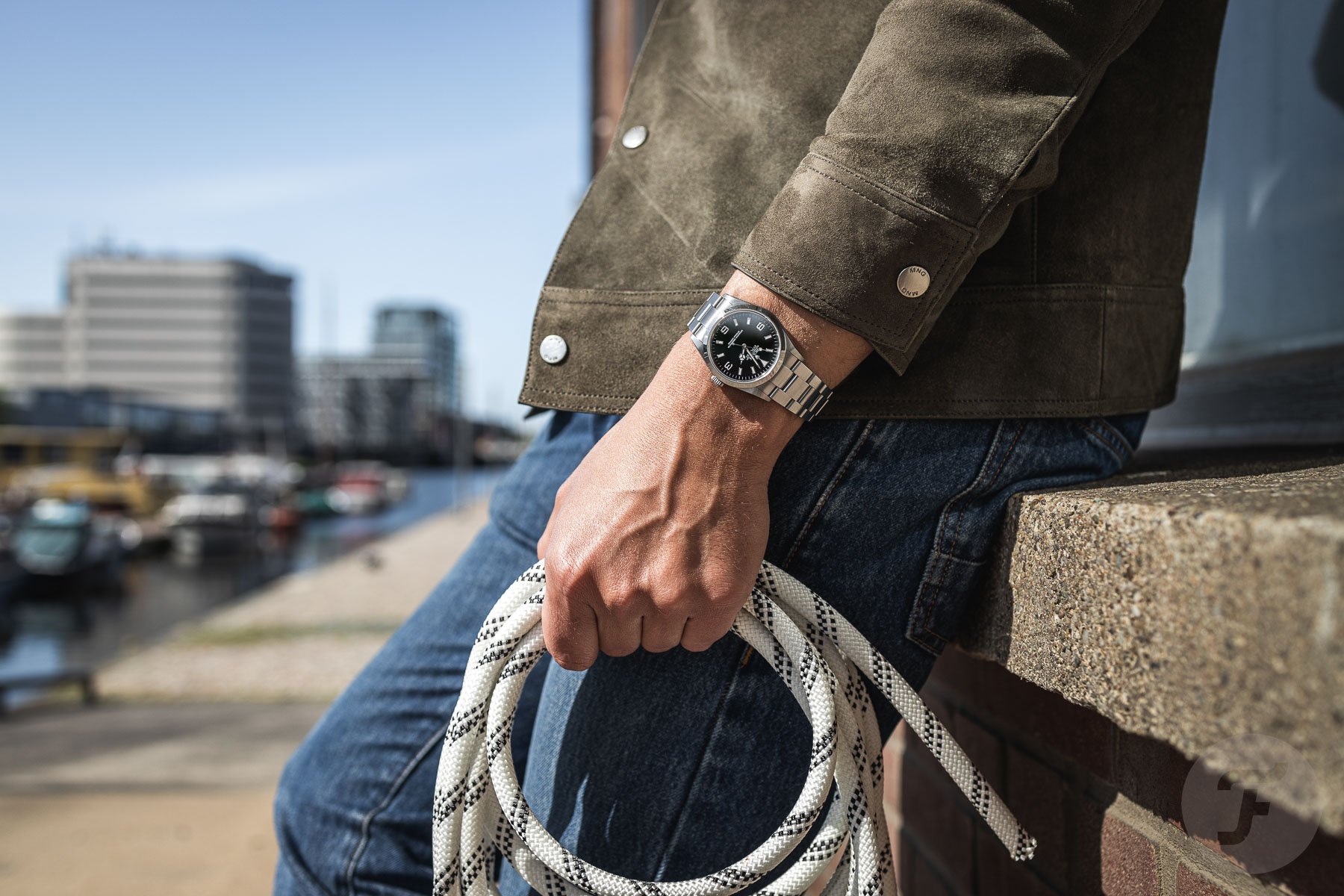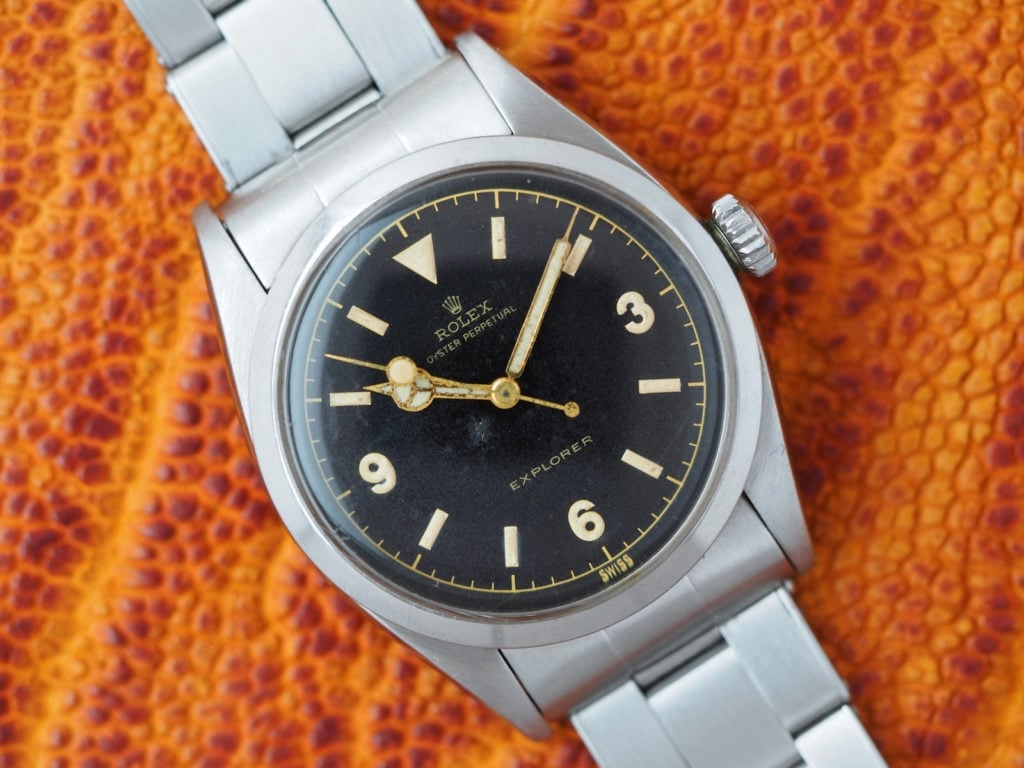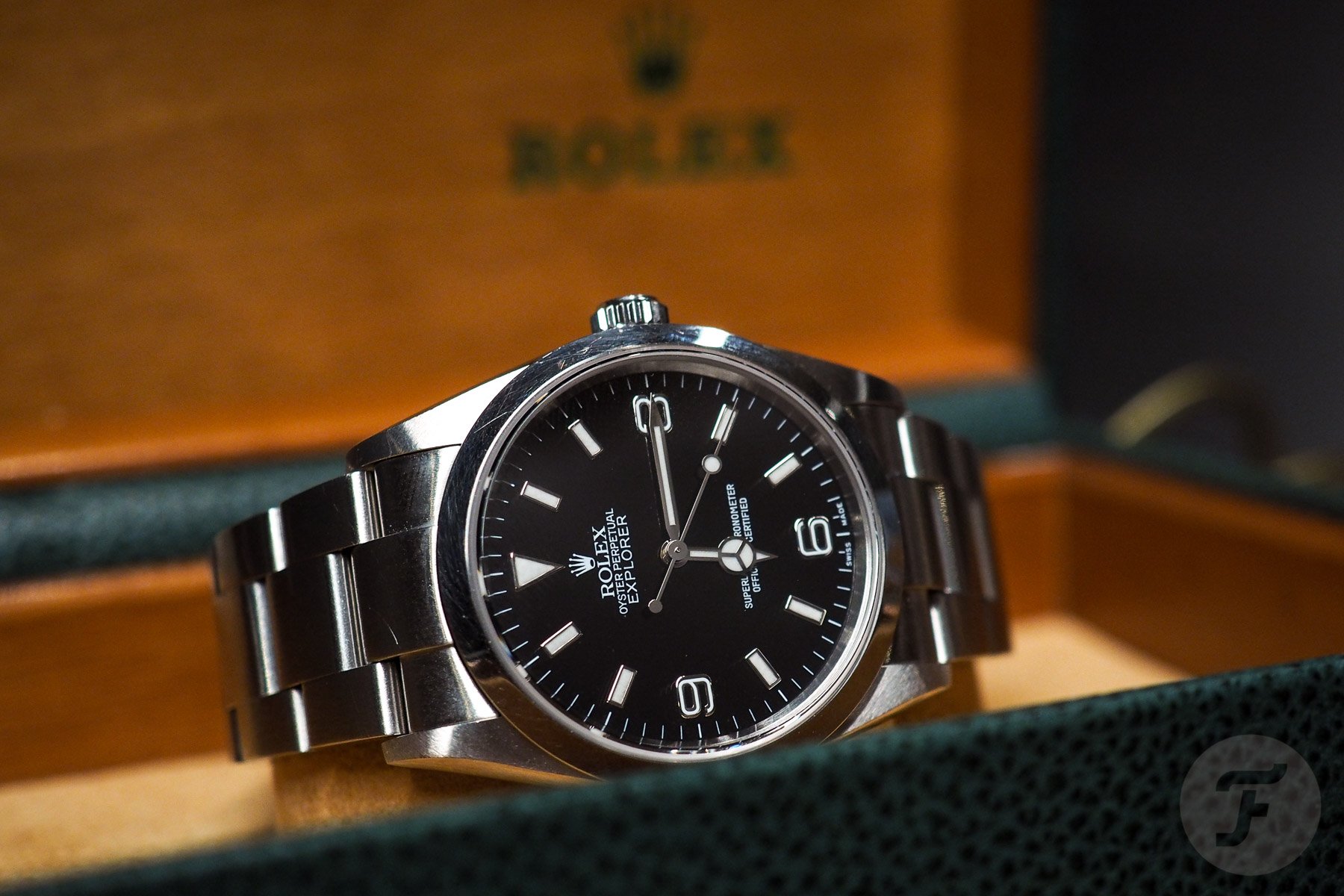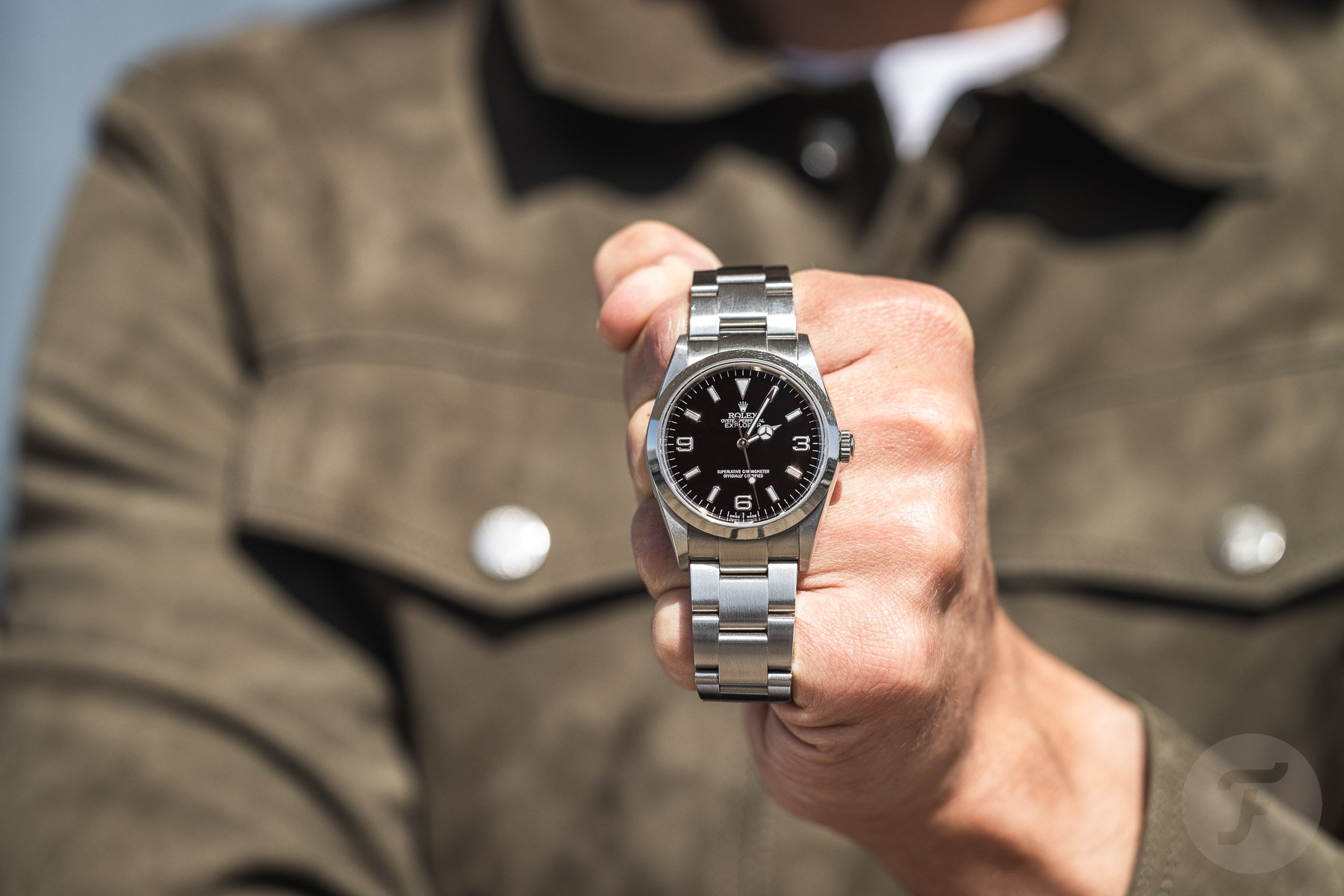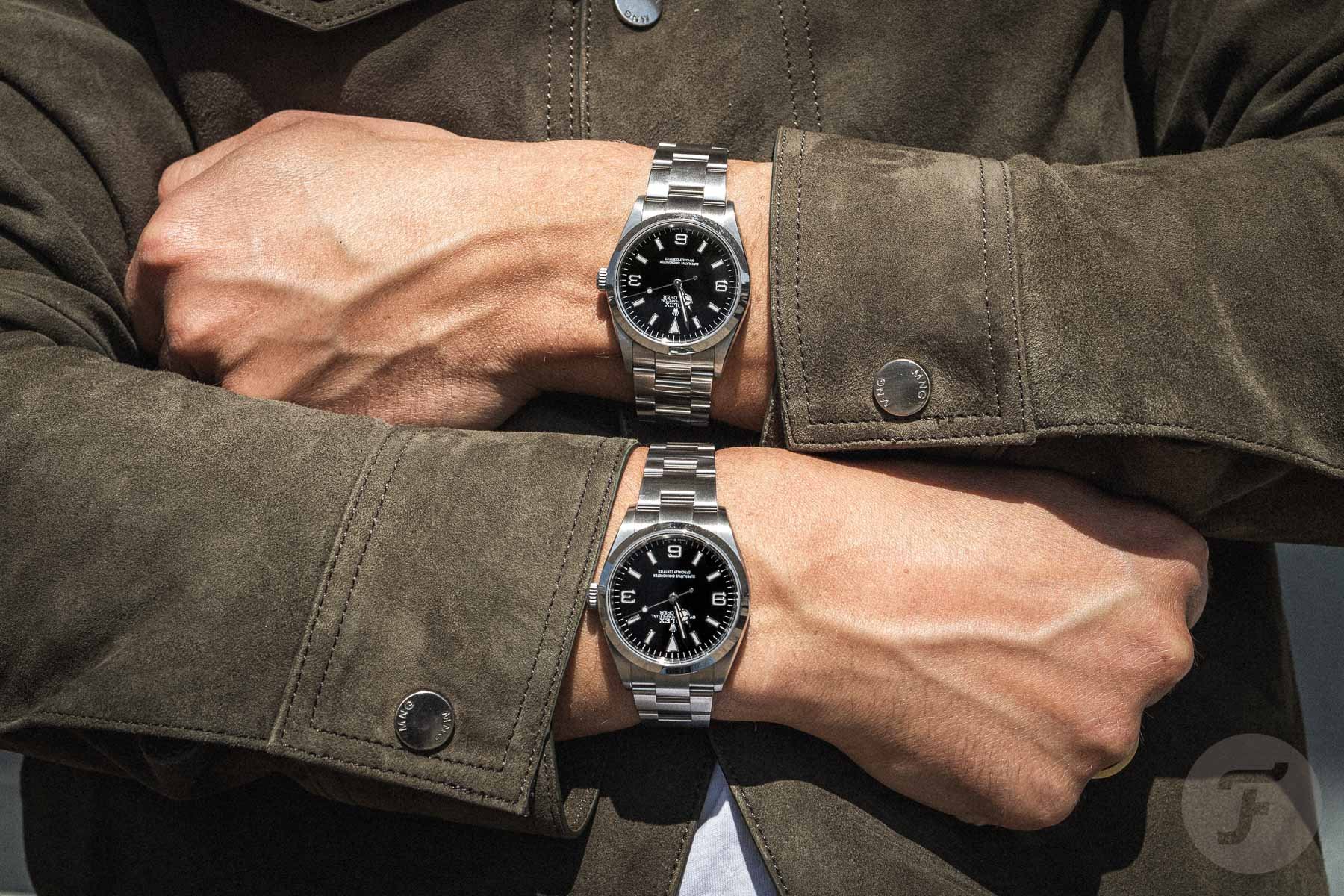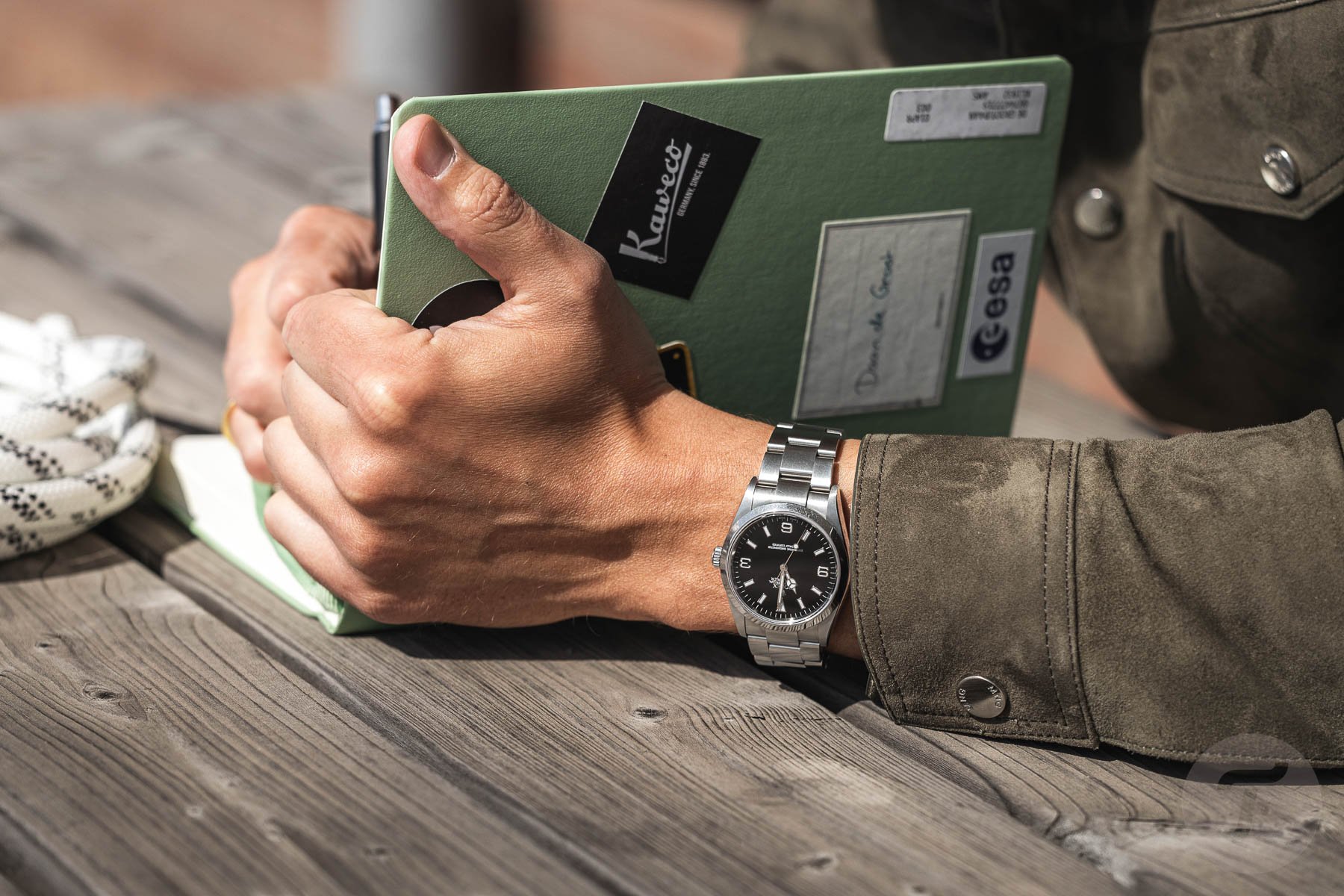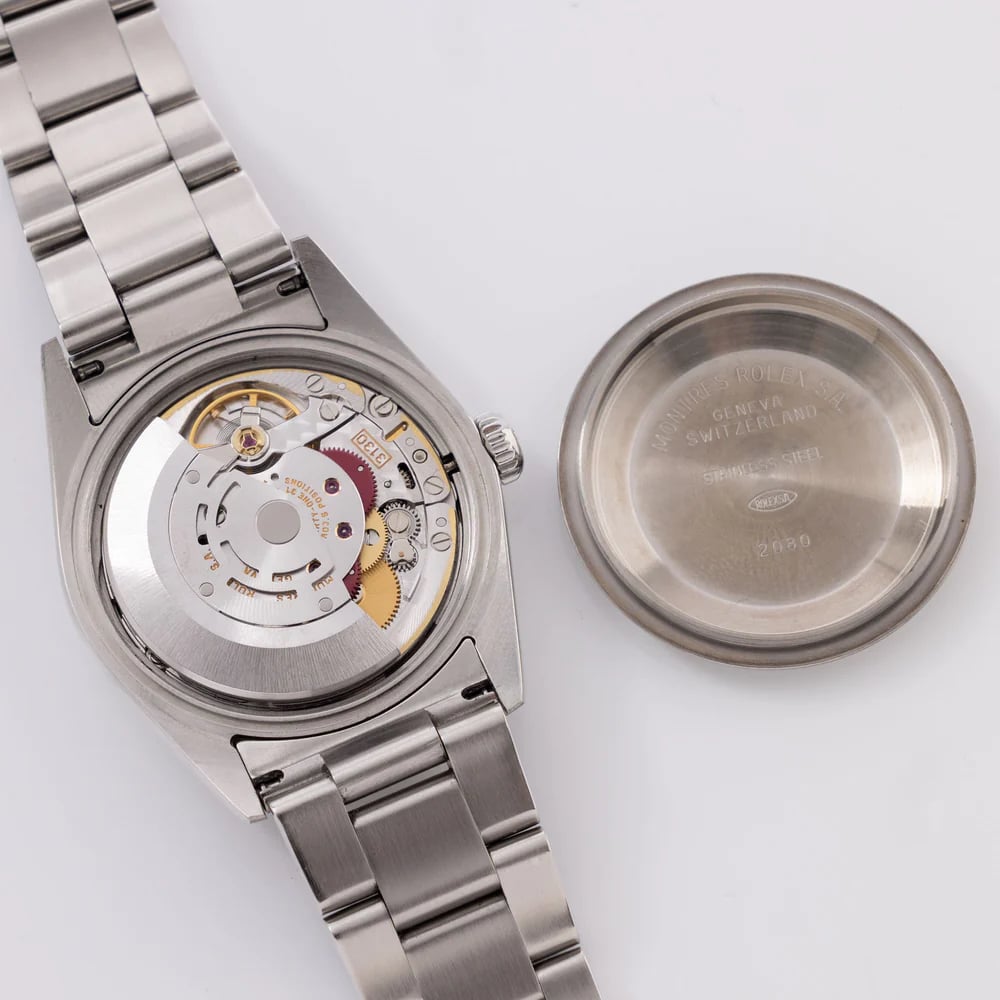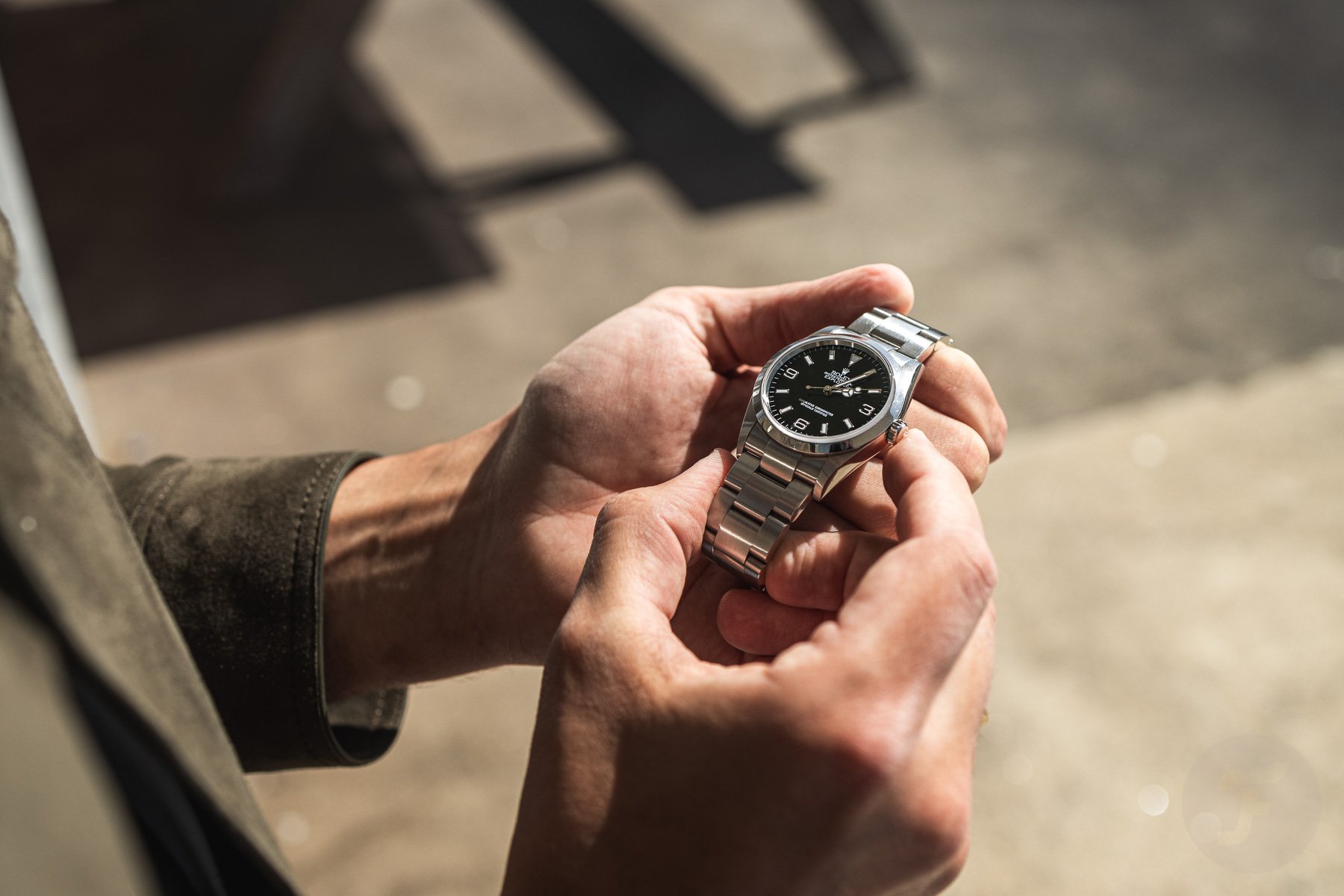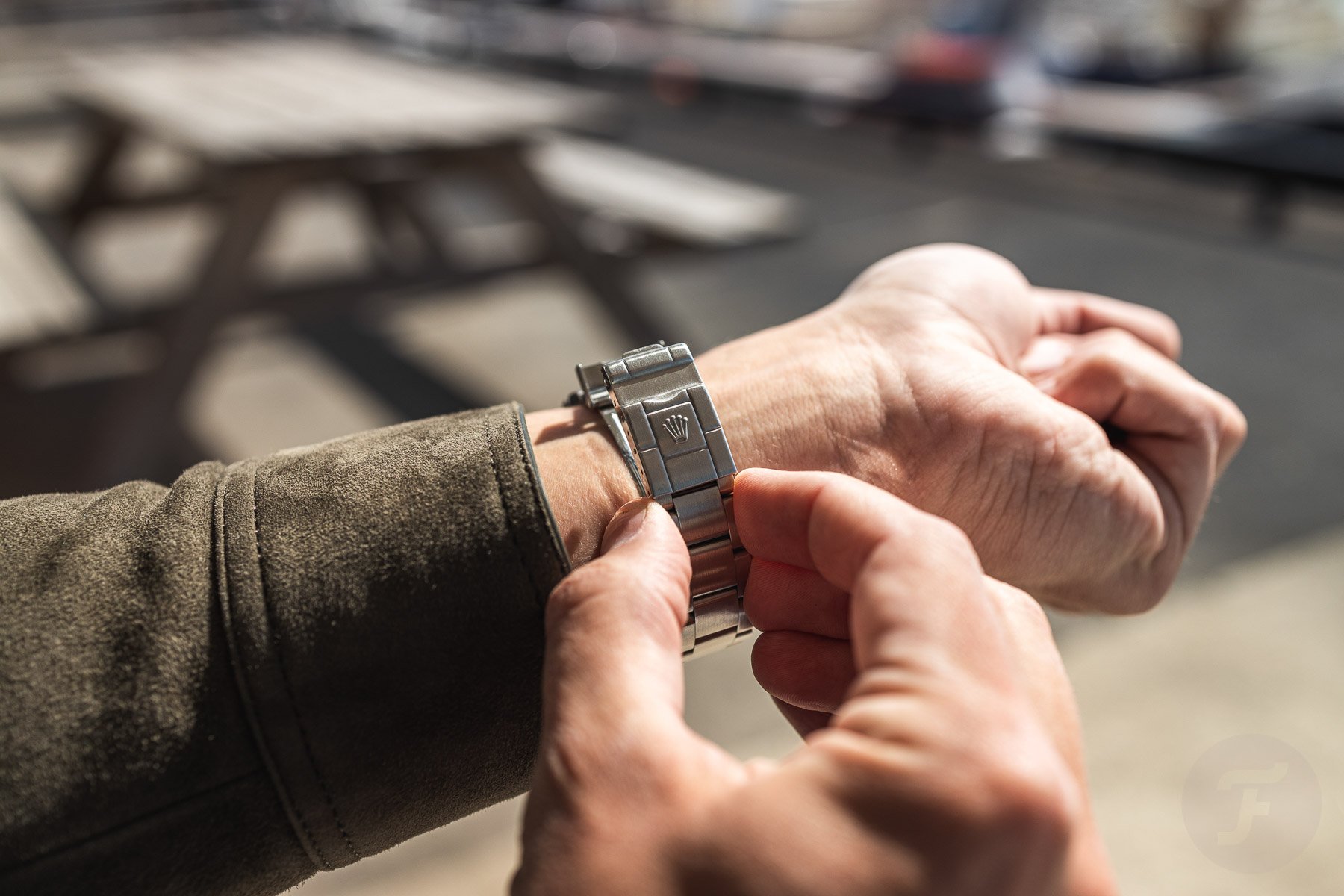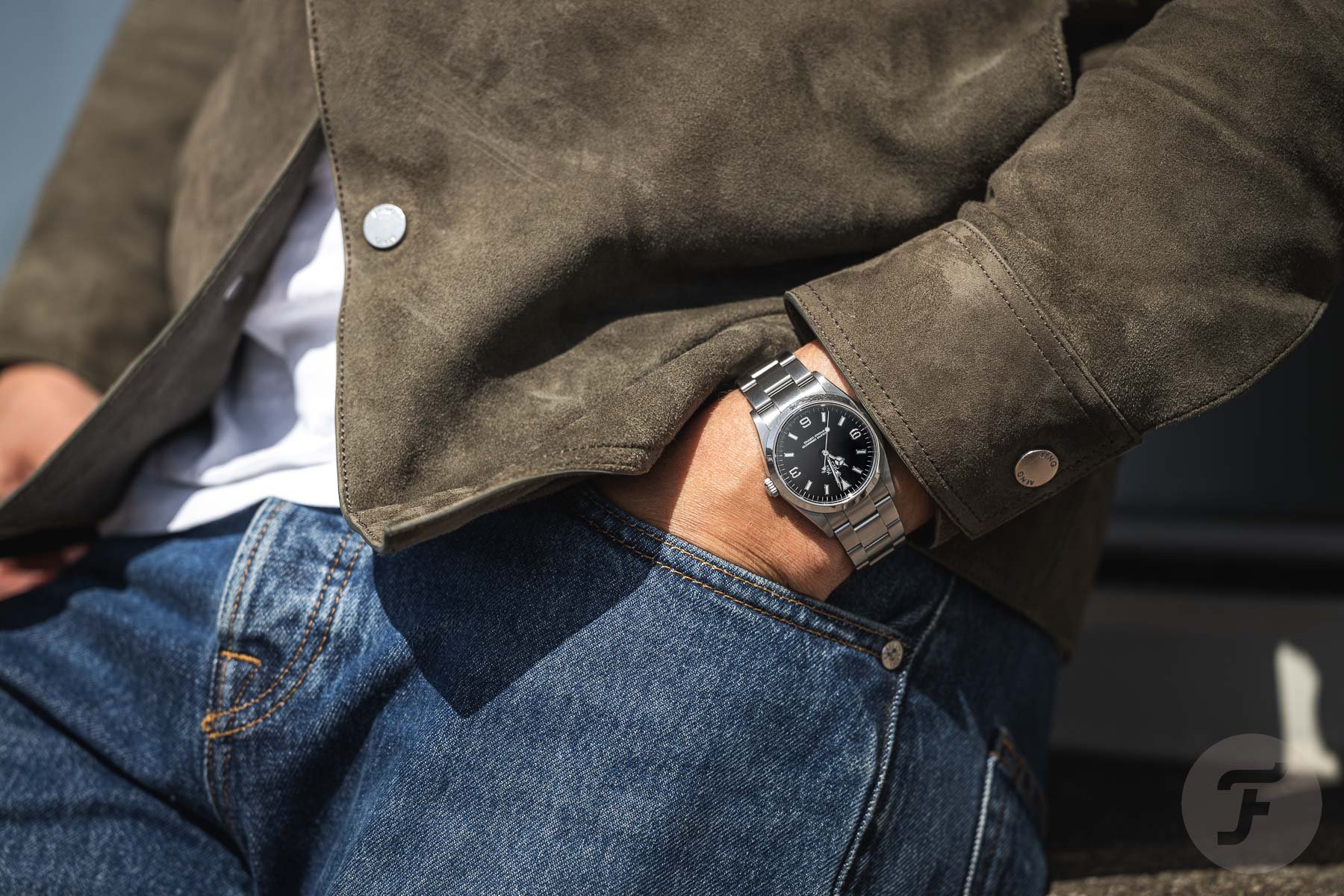Exploring Evergreens: The Rolex Explorer Ref. 114270
In this series called Exploring Evergreens, we review watches that have been around for over a decade — or long enough to feel ubiquitous — and ask ourselves whether they have managed to stand the test of time. We’ll address whether they’re still relevant, how they feel today, and, ultimately, if they’re worth their current prices. In some cases, when the authors own/have owned the specific pieces, they’ll dig into how their feelings about them have evolved and whether or not they still deserve a spot in their collections. We’ll cover anything from truly timeless and budget-friendly classics to vintage and neo-vintage heavy hitters. Today, it’s Daan’s turn with his Rolex Explorer ref. 114270 from 2004.
I already told you that it wasn’t love at first sight between me and my Rolex Explorer. I once bought a Datejust ref. 1603 instead because I thought it would suit me better. After selling that watch following a not-so-successful couple of months, it still took me a few years to realize that I really “needed” the 114270 in my collection. And since I bought the Explorer a little over a year ago, it has become one of my most frequently worn watches. So, spoiler alert: yes, for me, the Rolex Explorer is still a very relevant watch. But before I tell you why, let’s go over a few basics.
Exploring Evergreens: The Rolex Explorer ref. 114270
The Rolex Explorer originated in 1953 after Sherpa Tenzing Norgay and mountaineer Sir Edmund Hillary became the first people ever to reach the summit of Mount Everest. They weren’t exactly carrying an Explorer with them on the expedition but a Rolex chronometer with a similar 36mm Oyster case. However, Rolex then decided to register the trademark for the Explorer name. The first watch to carry that name was the Rolex 6150 from 1953. Right from the start, it had many of the characteristics that so many of us like so much.
The 36mm Oyster case, the black dial with numerals at 3, 6, and 9 o’clock, and the Mercedes hour hand and lollipop seconds hand were all already there. Fast-forward to 1989, and many references later, all those characteristics were still there in reference 14270, the predecessor of mine. This reference set the standard for all modern Rolex Explorers. It came with that same 36mm stainless steel case and a black dial. But this time, the baton indexes and numerals were white gold and applied. The indexes even featured some tritium inside for better legibility in the dark.
In 2001, “my” reference 114270 was introduced. It looked exactly like its predecessor, and just like the last version of the 14270, it featured Super-LumiNova. The only real differences were the solid end links and the upgraded 3130 movement. Those sturdier end links and the more shock-resistant movement were the main reasons for me to go for this reference instead of the earlier one. In 2010, Rolex discontinued the 114270 and introduced the 39mm 214270. Right now, Rolex has two Explorers in the collection — the 36mm 124270 and the 40mm 224270. Oh, and I almost forgot, there’s also a two-tone 36mm Explorer, the reference 124273.
The Explorer 114270’s (ideal) sizing
Basically, there’s an Explorer for everyone now, but my Explorer of choice is the 114270. It has a 36mm stainless steel Oyster case, which is a little over 11mm thick and spans just over 44mm from lug to lug. It’s not the biggest watch out there or in my collection, but it certainly has enough wrist presence. That’s partly thanks to Rolex’s magnificent Oyster bracelet. And that’s where it gets interesting.
If you’ve read my comparison between the current Explorer and mine, you’ll already know that the size differences between these watches are almost negligible — on paper, that is. The current reference 124270 is slightly thicker and shorter from lug to lug. But what makes the biggest difference, in my eyes, is that the bracelet starts at 19mm wide and tapers down to 14mm. The bracelet on my Explorer starts at 20mm wide and ends at 16mm at the stamped clasp. I feel that this wider bracelet gives the Explorer a little more character and presence on the wrist. That’s why I chose this older reference over the newer one.
No matter which 36mm reference you pick, though, they all wear so very comfortably. The Explorer is the perfect everyday companion. It’s big enough to look good and strong on your wrist, but it also doesn’t bother you while you’re doing your thing. Besides, with its screw-down crown, it’s also no problem to take it swimming. That’s exactly why this was my watch of choice for my six weeks in Spain last summer.
Caliber 3130
The 114270 is powered by Rolex’s Perpetual caliber 3130. Like all Perpetual calibers, it’s capable of running within chronometer specs. Whether it does so or not depends on whether and by whom you get your watch serviced. It’s an automatic movement that features 31 jewels, runs at a 28,800vph frequency, and has a 48-hour power reserve. Rather than a balance cock, it has a sturdier balance bridge, and it also utilizes a precise Parachrom hairspring. Just like the 114270, the caliber 3130 was introduced in 2001 and was used by Rolex for about 20 years.
The Explorer 114270’s value and relevance
Right now, when you look on Chrono24, for example, the Rolex Explorer ref. 114270 starts at €4,300. However, most of those examples are in Japan. The ones offered in Europe and the US start at around €5,000. I think you should indeed be able to find a decent one for right around that price. In that case, it’s about €2,500 less expensive than the current Rolex Explorer (if you’re able to get it at the list price, of course).
That makes the Explorer ref. 114270 a very relevant option in my eyes. It looks about the same, apart from the lumed numerals. However, you don’t get the updated movement with a more efficient Chronergy escapement and extended 70-hour power reserve. The watch also doesn’t have the improved clasp with an on-the-fly 5mm adjustment. But, honestly, 48 hours are plenty for an automatic movement, and you can still fine-tune the length of the bracelet with, for example, a paperclip.
Closing thoughts
So, I hope it’s clear by now that from all the post-1989 Explorer references, the 114270 is my favorite and the reasons why. In my eyes, it has the perfect dimensions and a caliber that’s still more than capable. Furthermore, it’s significantly more affordable than the current 36mm Rolex Explorer. Before buying it, I was a little afraid that I would get bored of it. But having owned it now for a little over a year showed me that it’s such a good option when I want to wear a very capable luxury watch that doesn’t get in the way. In hindsight, I should’ve bought it when I got that vintage Datejust instead. On the other hand, now I know I’ll be very happy wearing this one for many more years.
What are your thoughts on the Rolex Explorer ref. 114270? Let me know in the comments below, and we’ll also be happy to hear your suggestions for future installments of Exploring Evergreens.

